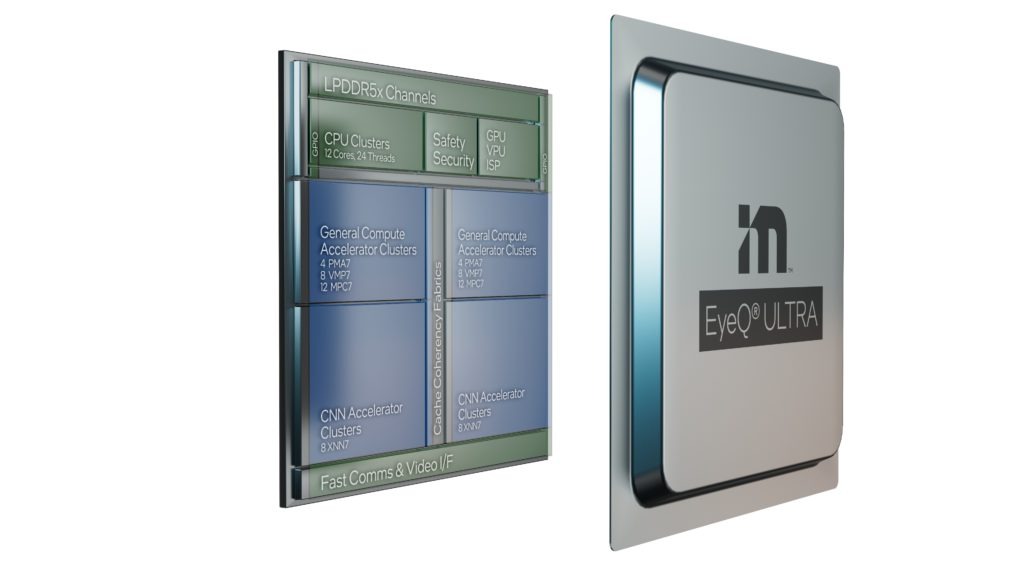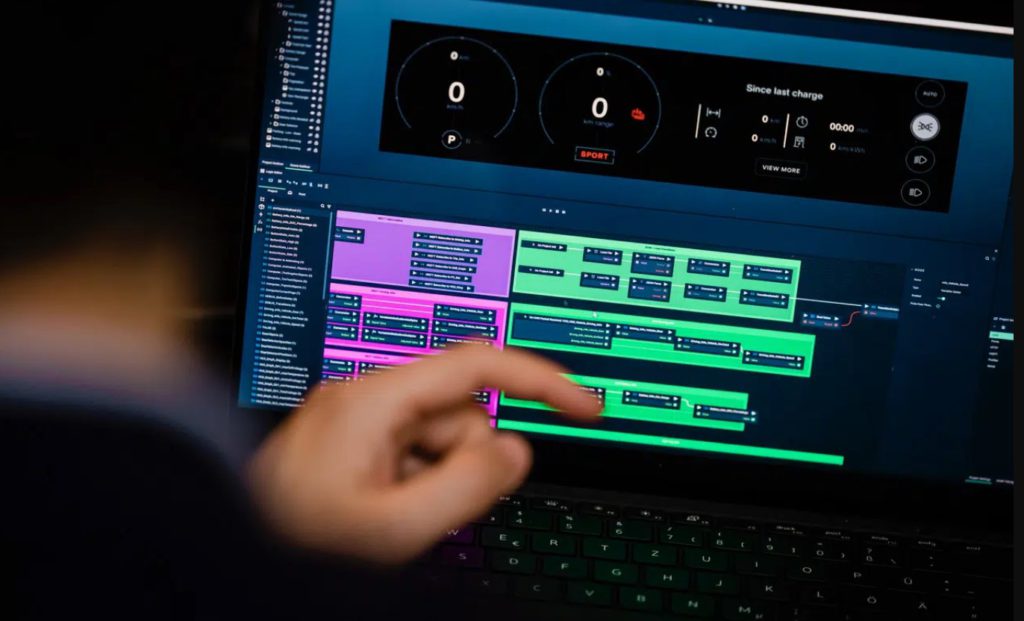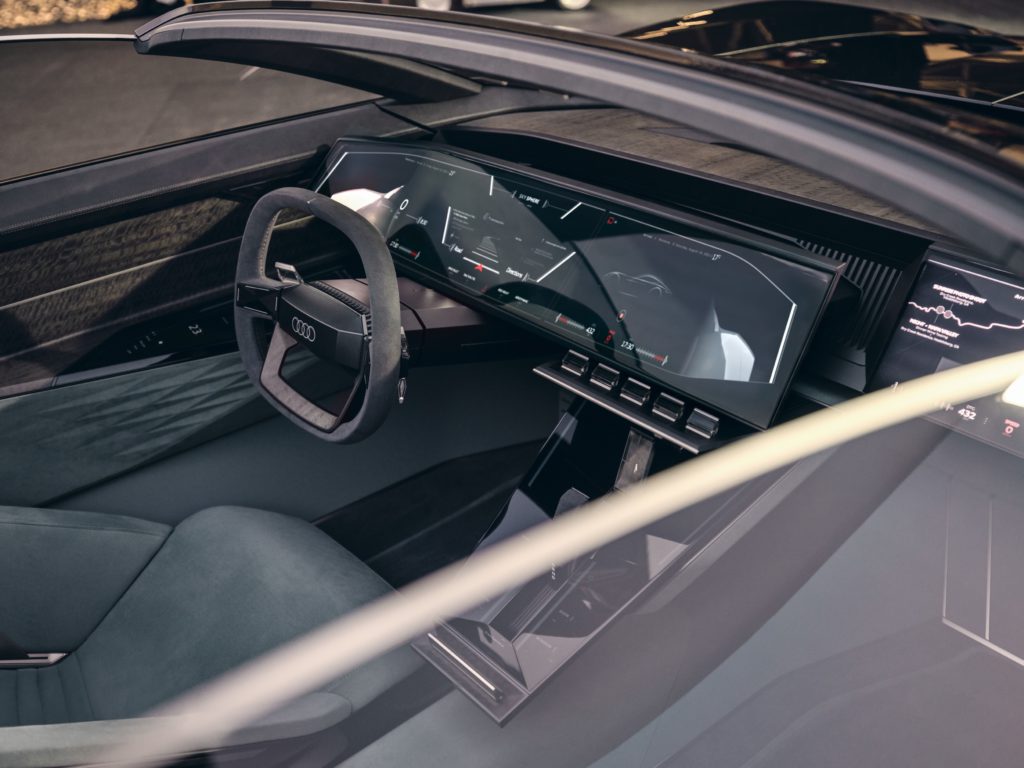CES 2022: VW, Ford, and Zeekr work with Mobileye on autonomous tech
05 January 2022

Mobileye used its CES 2022 platform to showcase some of its biggest automotive collaborations. Alongside its OEM partners, the Intel company unveiled new programmes focused on advanced driver-assistance systems (ADAS) and autonomous-vehicle (AV) technology.
The developer also brought its new EyeQ Ultra chip to the stage. Mobileye purpose-built the system-on-chip (SoC) for SAE Level 4 (L4) autonomous driving. The required silicon is expected at the end of 2023, with automotive production scheduled for 2025.
‘Our customers are demonstrating that innovation is at the centre of their future strategies and leaning on Mobileye to help execute their visions,’ said Amnon Shashua, Mobileye president and CEO. ‘As a trusted collaborator, Mobileye is firing on all cylinders to deliver scalable ADAS-to-AV solutions that exceed the expectations of our customers and, at the same time, push the industry forward. We are grateful for our ongoing collaborations and look forward to setting more new industry standards together.’
VW sources swarm data
Volkswagen (VW) Group has become the first OEM to use the Intel company’s mapping data to enhance its ADAS features. Travel Assist 2.5, VW’s latest L2 ADAS iteration, uses swarm data that is collected from other Mobileye-equipped vehicles. Known as Mobileye Roadbook, this programme is a crowd-sourced, cloud-generated database of precise maps.
The company’s Road Experience Management (REM) technology also automatically aggregates and creates AV cloud-based maps. This allows Mobileye to capture data about a driver’s position on the road, their trajectory during turns and where they stop. Data this granular will be used to better equip automated-driving systems for the real world.
Demonstrating the potential of swarm-supported ADAS, Shashua and Herbert Diess, chairman of the board of VW Group, took out a VW ID.4 in Munich. The vehicle was able to perform lane-keeping without the need for visible lane markings. Diess saw the advantages of REM technology first-hand.
‘It is a clear advantage of using real driving data over maps… everything works well, and the car is basically following this car without any intervention from my side,’ he said. The Roadbook-enhanced Travel Assist feature will soon be available in VW, Skoda and SEAT battery-electric vehicles (BEVs) based on the group’s Modular Electric Drive (MEB) platform.
Zeekr goes all in
Geely brand Zeekr will develop what they believe will be the first consumer AV using Mobileye technology. Strengthening their collaboration, the two companies will build an L4-enabled BEV with a suite of different AV technologies. This will include Mobileye’s True Redundancy sensing, where sensors take in all elements of their surroundings to construct a full model. The new vehicle will also use REM mapping and Responsibility-Sensitive Safety (RSS)-based driving policy.
Geely’s sustainable-experience architecture (SEA) will contribute true-redundant braking, steering, and power. The vehicle’s consumer debut is expected in China by 2024, with a global rollout to follow.
‘Mobileye has been a strategic partner to our mission of delivering lifestyle vehicles fit for a more sustainable and autonomous future of transportation,’ said Andy An, CEO of Zeekr intelligent technology. ‘Our partnership supports Zeekr and Mobileye’s shared ambitions for leading the global ADAS and AV industry. Zeekr welcomes open collaboration that enables the integration of technological expertise to create a more sophisticated autonomous-mobility experience for our customers.’
Bolstering Ford’s BlueCruise
Mobileye also confirmed its strategic relationship with Ford is expanding. The American brand will utilise the REM technology for its own ADAS system. BlueCruise allows users to operate their vehicle hands-free while monitored by a camera that ensures the driver’s eyes remain on the road.
Like VW, the deployment of REM technology will allow Ford’s ADAS system to manage areas without visible lane markings as well as qualified divided highways. The two companies are working on an open platform that will allow the OEM to build and integrate its own next-gen solution.
‘Ford has been delivering new-vehicle technologies that make driving safer and easier for more than a century,’ said Jim Farley, Ford’s president and CEO. ‘We are excited to work with Mobileye on a platform that supports our development of next-generation autonomy technologies. Our investment in these capabilities will allow us to transform our customers’ transportation experiences.’
A purpose-built chip
Capable of running 176 trillion operations per second (TOPS), the EyeQ Ultra chip looks to maximise both effectiveness and efficiency. To put this in perspective, the processors featured in Mobileye’s previous EyeQ5 chip were only capable of 24 TOPS. Mobileye calculates that one new Ultra SoC contains the performance of 10 EyeQ5s.
‘Consumer AV is the end game for the industry,’ said Shashua. ‘By developing the entire self-driving solution – from hardware and software to mapping and service models – Mobileye has a unique perspective into the exact requirements for the self-driving system that enables us to reach the performance-and-cost optimisation that will make consumer AVs a reality.’



